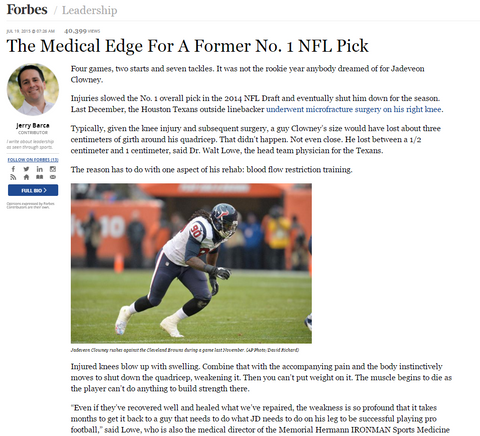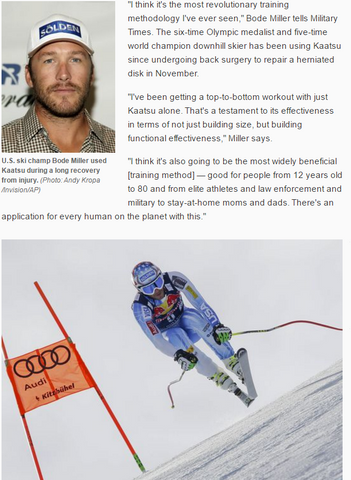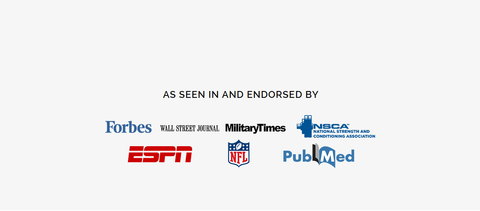Growth plateaus. We have all been there.
Whether we’re training for strength or muscle mass, we’ve all enjoyed a period of such productivity that we think to ourselves, “if this progress keeps up, we will be able to reach our goals in no time”.
But what happens next? Despite nailing our routine, our habits, our nutrition, heck, even
our rest periods, our progress inevitably starts to slow down into that dreadful zone.
The plateau.
So how do we get ourselves out of this plateau while still making progress with our training?
Well, the first thing we need to do is to recognise when we are there!
How do we then tell if we’ve plateaued and what the cause is? The quick answer: neurological fatigue.
This occurs when your central nervous system (CNS) gets completely "burned out" or exhausted due to the stress of training, and is therefore not firing signals of contraction to your muscles with the same magnitude as they did before.
A great way to test this is with a “time based bilateral grip test”. When performing this test, stand upright with two plates resting on each side of your legs resting along your legs, i.e. four plates in total (I use 20 kg plates, but you should use a weight that you can pinch and carry for longer than 5 seconds). Then, simply bend down, pinch the plates and stand up again, keeping your elbows and wrists straight. Basically just like holding a couple of sandwiches by your side, only, well,.. the bread is made of Iron plates…
Measure how long you can pinch and hold the weighted disks together. Compare your result when you suspect you are burned out to your previous best. If the result is less than 80% within range, that is, if your best is 100 seconds, and you managed less than 80 second, chances are your central nervous system is fatigued and you’ve hit or you're about to hit a plateau.
This neurological fatigue typically also occurs when you have stuck with the same
training program for too long. Its paradoxical to think of it as fatigue, as most people
think of it rather as the body simply “getting used to the program", but it’s actually two sides of the same coin. Lack of new stimuli leaves you lethargic and an old program is not stimulating your CNS to fire in the same magnitude as a new one because it has “learned” the routine.
(You can simply acquire such workout plans here)
So now the big question becomes, what can we do to battle this?
Typically, the cure most lifters prescribe themselves is to go through a "deloading phase", meaning you keep training at a lower volume or lower intensity to allow their body to “catch up” while not stopping to train completely. Another way they handle a plateau is that they simply "switch up their routine".
Sure, this might also help the mental motivation by convincing your brain that things will change, however, physiologically, a change in routine solves only half the issue. Because No matter how good you are at deloading, taking a break in your hypertrophy stage automatically leads to your overall growth taking a break as well.
“So, you’re telling me that my CNS is fatigued, but I still can’t take a break? Have you gone mad, Mehdi? What the heck am I supposed to do then??”.
What if I told you there was a way to deload, but still keep growing? A way to reach hypertrophy while lifting lighter?
“Hmm, I’m listening…”

This is where the science of occlusion training, or venous blood flow restriction training, comes into play. This form of training will gives your CNS some well-deserved time to rest, while keeping your muscles in the hypertrophy zone, enabling them to keep growing in both strength and muscle mass, even when you’re deloading!
What is occlusion training?
To put it in the simplest of terms, venous occlusion training is the reduction of the diameter of the surrounding veins of a muscle by means of pressure at the upper part of that working muscle. This is done to reduce the outflow of deoxygenated venous blood, which is filled with metabolic waste caused by contracting a muscle.
With a reduced venous outflow, the metabolic waste concentration naturally increases, and thus, the bodies anabolic growth hormone reaction increases as well, and with a lot less weight that conventional training (20-30% 1MR).
During properly performed venous occlusion training, arterial oxygenated nutrient rich blood is able to enter the muscle via the un-occluded arterial flow; though, due to the occlusion bands, the veins are narrowed so that the blood pools, just like water would pool in a dam, and is prevented from leaving the working muscle in its entirety, thus directly causing muscle hypertrophy. We are just artificially hacking and accelerating a principle that happens naturally when a muscle is full of venous blood, you are just used to calling it "the pump".
What weights should you use?
So, you’ve got the basics down – you’ve restricted the blood flow at the right areas and at the right pressure. What now? You are standing looking down at the weight rack in front of you, wondering how heavy weights you should pick up.
Normally, to achieve muscle hypertrophy it is recommended to lift a resistance of at least 65% of one’s 1 repetition maximum (1RM) for 6–12 repetitions, according to
the "American College of Sports Medicine"; Anything below that intensity rarely produces any substantial muscle hypertrophy or strength gains (1).

(Part on an in depth interview on his experience with kaatsu/Occlusion Training)
However, this is where occlusion training provides some unique benefits, as it is shown to produce positive training adaptations and muscle hypertrophy at intensities equivalent to physical activity of daily life (20–30% of maximal work capacity) (2).
In other words, with occlusion training, by only using loads as low as 20-30% of your
1RM lift, you can achieve the same level of muscle hypertrophy and growth as you
would by lifting with 65%-80% your 1RM under normal conditions!
This makes it the most essential tool in your gym bag for hacking your deloading script and changing it into a different animal all together.
How to merge occlusion training and deloading
A typical low-intensity prescription would involve training at an intensity of 20–50% of your 1RM with a pace of 2-second for both the concentric and eccentric actions. Perform 3-5 occluded sets of each exercise to fatigue. This is done to ensure that there is a high metabolic buildup in the muscles. The recommended rest periods are 30 seconds to 1 minute in length between each set, with the occlusion straps still being applied (3,4,5,6).
When you’re finished with the last set, remove whatever straps you are using to restore blood flow to the muscle again.

(Places and Federations Occlusion training has been mentioned and researched by in the past.)
Conclusion
So that was a boat load of information that I just dropped on you, so let’s sum it all up so you can feel confident going back into the gym and push past that annoying plateau.
When you hit a plateau, the best approach is to go through an "occlusion training
deloading phase". This means, train with weight as low as 20-30% of your 1RM but keep the reps high and use a 2 sec cadence. This will result in the same muscle hypertrophy that is normally only seen when using weights higher than 65% 1RM. At the same time, this will allow your CNS to get some rest and boost your your growth curve in the process.

(Blood works of humans and rats that underwent venous occlusion training compared to baselines from regular intensity exersize)
One last pro tip.
Despite this blog post being about "how to battle growth plateaus using occlusion
training", this type of blood flow restriction training has many more applications.
Its true potential is maximised when you use the methods described above as a finisher - at the end of a conventional heavy weight lifting session! Releasing an increase in HGH(11,5), boosting your 1RM(11), elevating muscular endurance, and a decrease in the genetic expression of Myostatin (10) (a muscle growth inhibition protein). And even better, these physiological changes are shown to occur in as early as 3 weeks.
Convinced to incorporate this into your life? Click here to get the beginner's training plan and get started !
written and research gathered by
Former pro athlete and Medical Doctor
Mehdi Ettehadulhagh
References:
1. American College of Sports Medicine. Position stand: progression models in resistance training for healthy adults. Med Sci Sports Exerc 34: 364–380, 2002.
2.Abe T, Kearns C, and Sato Y. Muscle size and strength are increased following walk training with restricted venous blood flow from the leg muscle, Kaatsu-walk training. J Appl Physiol 100: 1460–1466, 2006.
3. Burgomaster K, Moore D, Schofield L, Phillips S, Sale D, and Gibala M. Resistance training with vascular occlusion: metabolic adaptations in human muscle. Med Sci Sports Exerc 35: 1203– 1208, 2003.
4. Cook S, Clark B, and Ploutz-Snyder L. Effects of exercise load and blood-flow restriction on skeletal muscle function. Med Sci Sports Exerc 39: 1708–1713, 2007.
5.Takarada Y, Nakamura Y, Aruga S, Onda T, Miyazaki S, and Ishii N. Rapid increase in plasma growth hormone after low-intensity resistance exercise with vascular occlusion. J Appl Physiol 88: 61–65, 2000.
6. Takarada Y, Sato Y, and Ishii N. Effects of resistance exercise combined with vascular occlusion on muscle function in athletes. Eur J Appl Physiol 86: 308–314, 2002.
7.Cook S, Clark B, and Ploutz-Snyder L. Effects of exercise load and blood-flow restriction on skeletal muscle function. Med Sci Sports Exerc 39: 1708–1713, 2007
8.Iida H, Kurano M, Takano H, Kubota N, Morita T, Meguro K, Sato Y, Abe T, Yamazaki Y, Uno K, Takenaka K, Hirose K, and Nakajima T. Hemodynamic and neurohumoral responses to the restriction of femoral blood blow by KAATSU in healthy subjects. Eur J Appl Physiol 100: 275–285, 2007
9. Takano H, Morita T, Iida H, Asada K, Kato M, Uno K, Hirose K, Matsumoto A, Takenaka K, Hirata Y, Eto F, Nagai R, Sato Y, and Nakaajima T. Hemodynamic and hormonal responses to a short-term low-intensity resistance exercise with the reduction of muscle blood flow. Eur J Appl Physiol 95: 65–73, 2005.
10.Drummond M, Fujita S, Abe T, Dreyer H, Volpi E, and Rasmussen B. Human muscle gene expression following resistance exercise and blood flow restriction. Med Sci Sports Exerc 40: 691–698, 2008
11.Abe T, Kearns C, and Sato Y. Muscle size and strength are increased following walk training with restricted venous blood flow from the leg muscle, Kaatsu-walk training. J Appl Physiol 100: 1460–1466, 2006
